There are many diving organizations, each with their own specific and customized certification programs. The top 7 scuba diving organizations are PADI, CMAS, SSI, BSAC, SDI, NAUI, RAID. Discover in this article specific and relevant information about each one of them for this 2025.
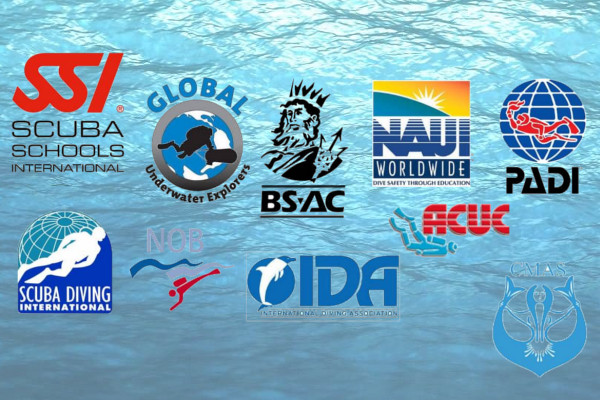
Scuba diving organizations
There are more than 160 scuba diving organizations, not counting those for technical and specialized diving.
With so many options, how do you choose the most suitable organization for you?
It is difficult to say that one organization is better than another. Some of the organizations are bigger and have more experience. Others are better known or specialized or have different teaching methods.
The first organizations with a diving system, not as we know it today, were developed from the 1950s onwards.
Thanks to the well-known Jacques-Yves Cousteau, who between 1942 and 1943, I developed the first open-circuit autonomous breathing system, with the help of his father-in-law. A military engineer from World War II.
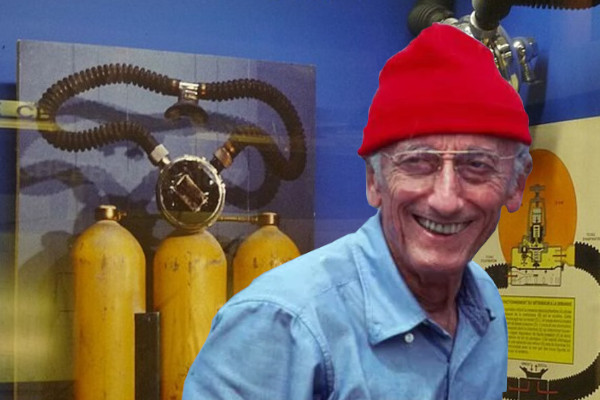
With the invention of modern breathing equipment, scuba diving is within the reach of nearly everyone.
The exploration of the underwater world is no longer related only to military or complex underwater jobs.
In order to systematize diving training methods and procedures, the first diving organizations began to appear.
All these federations belong to the category of non-profit organizations or private enterprises, oriented to the development of diving in the world.
Most dive organizations started in there first steps in the United States, but almost every country in the world has its own type of dive organization.
Some of them are famous all over the world and others are still local groups.
Here we share the 7 than we consider the best ones, based in the aspects mentioned above.
1. PADI (Professional Association of Diving Instructors)
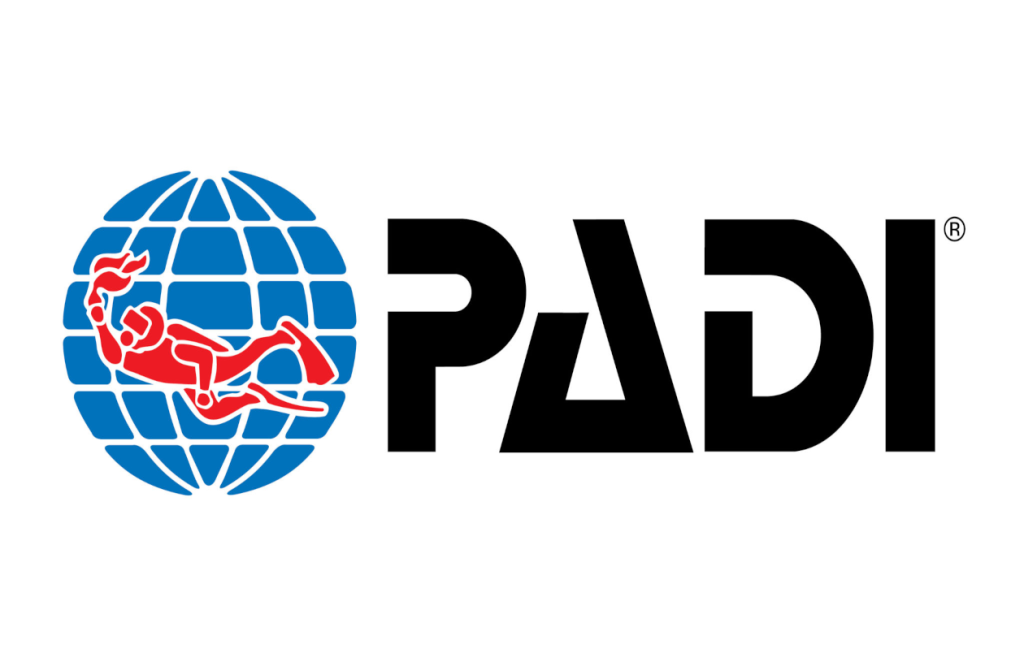
PADI is one of the oldest and most recognized diving organizations.
The fathers of this association are (a former NAUI instructor) and Ralph Erickson in 1966.
The two experts had a very clear vision when they started PADI. The main goal was to make the diving courses much more accessible to everyone and not just to a few group of people.
Cronin and Erickson’s proposal succeeded much more than they could have imagined. For this reason PADI is now the largest dive training institution in the world. And they have reported a total of 27 million certifications, valid in any country.
PADI dive centers are in more than 180 countries around the world and it is estimated that 70% of all dive certificates in the world are issued by PADI.
PADI’s Teaching method
Among other certification programs, PADI’s stands out for combining safety and convenience in learning.
The theoretical class can be carried out in person or online while the practices are carried out in swimming pools and in open water.
PADI’s input in the field of security has been invaluable. A large number of the rules for safe diving have been introduced by this organization.
PADI also promotes awareness of marine conservation and diver safety in its classes. Once you have completed the basic course, you can go for other advanced certifications.
PADI Training flowchart
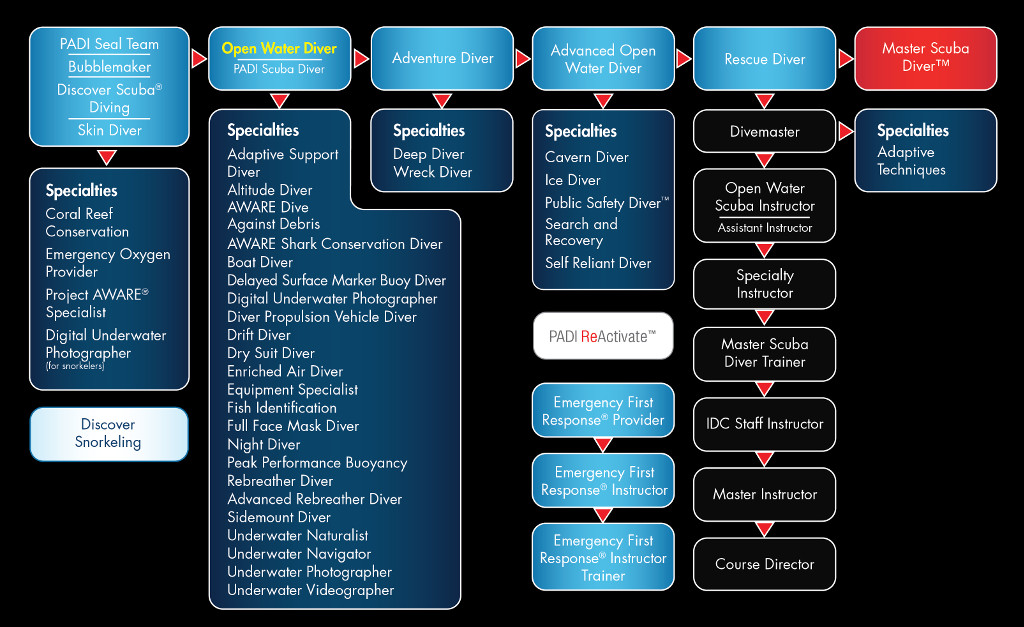
Why choose PADI as your certifying organization?
On its website PADI presents some good reasons why to choose this organization for your training and certification. We share three of them:
- Education: PADI’s educational system is one of the strongest according to experts considerations.
- Performance-based learning: The student progresses at their own pace.
- Training materials: PADI has very complete and professionally designed learning materials for the student to learn in the best possible way.
2. CMAS (Confédération Mondiale des Activités Subaquatiques)
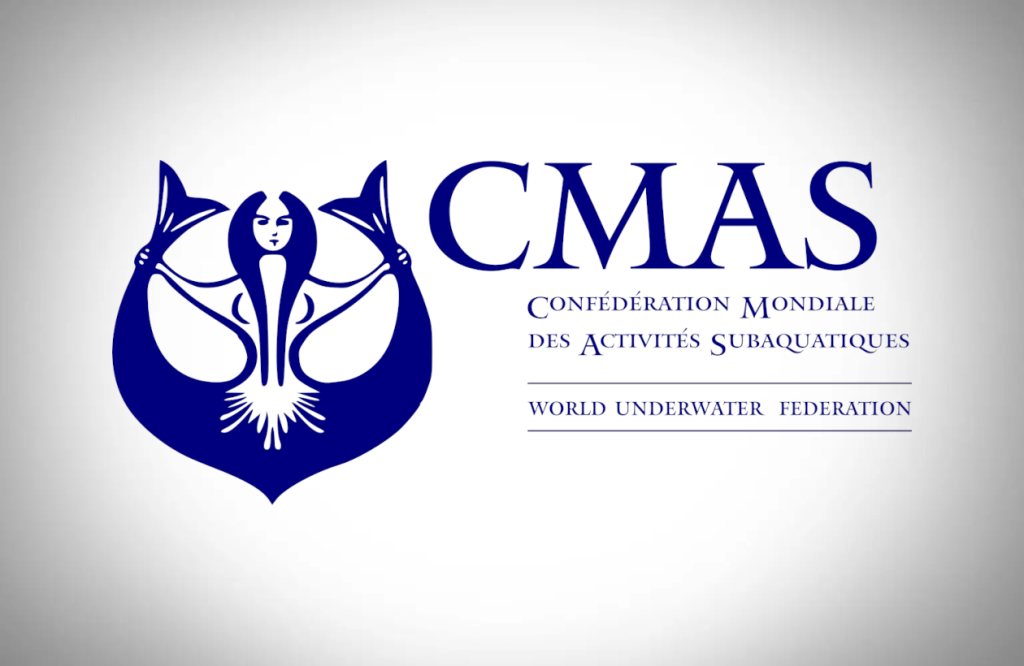
CMAS is a non-profit institution. This organization is famous since one of its founders was Jacques-Yves Cousteau. It was founded at the Monaco Congress in 1959.
The original purpose of CMAS was to support the development of diving and to unify educational standards in the different countries where it is present.
During the last decades CMAS has expanded its operations around the globe. Today, CMAS is in charge of regulating diving in more than 130 countries. To do so, it works directly with the national federations of each one, supervising the training they offer.
CMA’s Teaching method
CMAS teaching has a fairly traditional style. This is why the training of this organization belongs within the official diving standard.
For this organization the practical part is a high priority in all diving courses.
CMAS certifications are valid worldwide. This means that with your certificate you can dive in any country and continue your training in any other agency.
CMAS Training flowchart
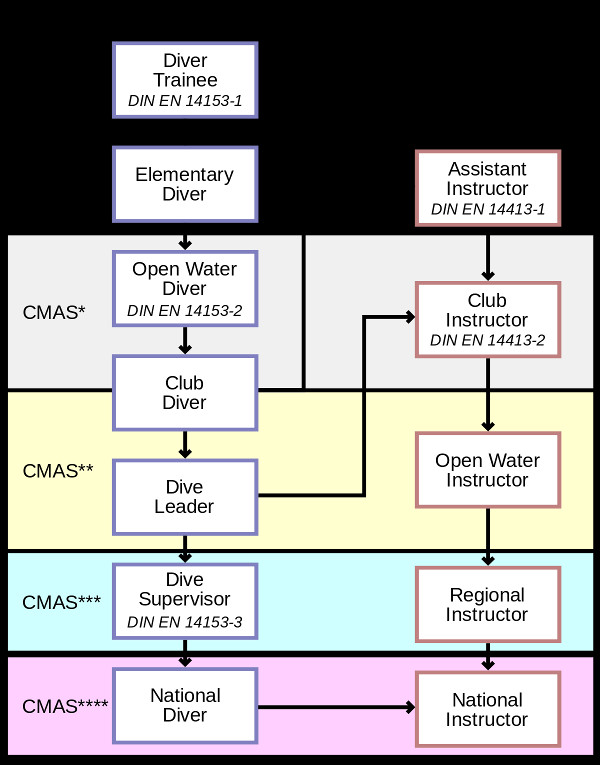
Why choose CMAS?
- International recognition: CMAS licenses are all around the world, so no matter where you are, you can use your certification.
- Different concept: CMAS is non-profit. This organization is more like a club than a commercial company.
- Cheaper: Because the CMAS concept is more club-like, trainings are typically not somenthing to charge for certification but rather for membership.
If you want to know more about this association, you can visit its official CMAS website. In it you will find detailed information about the Federations in each country.
3. SSI (Scuba Schools International)
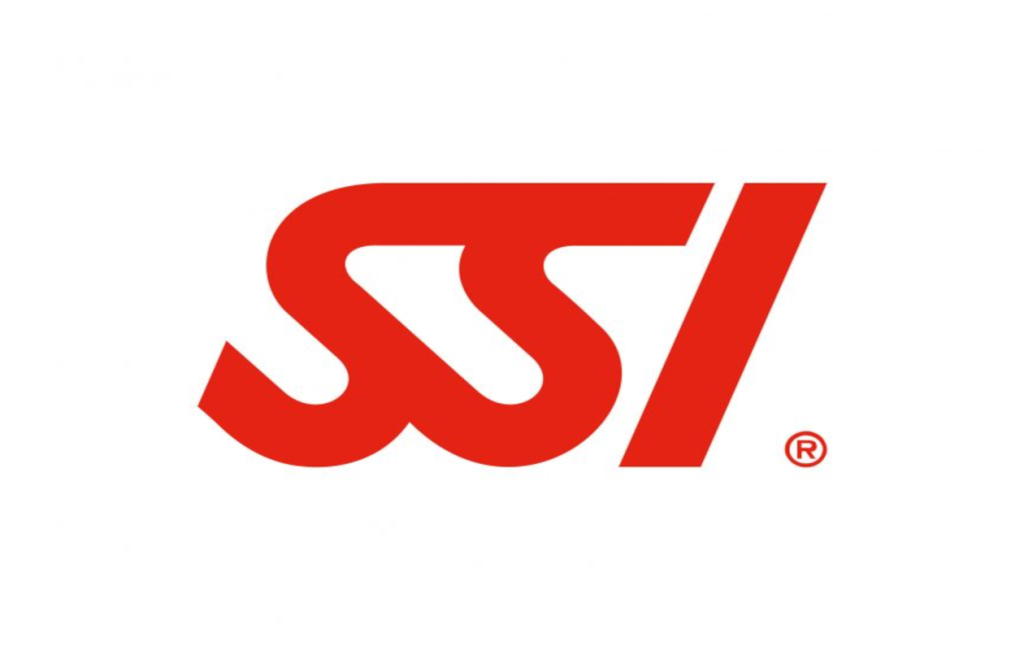
SSI is one of the oldest agencies, founded in 1970. Its main headquarters are in Colorado, United States, but it is present in more than 110 different countries.
In 1999 SSI merged with NASDS (National Association of Diving Schools). This gave it greater visibility.
Currently SSI is one of the largest organization with more than 2800 dive centers around the world, including the 5 continents.
One of the main features of SSI is the regulation of instructors. Everyone has the possibility of accessing available training materials without having to pay memberships. However, they must teach at one of the agency’s centers, as doing so on their own is not an option.
SSI’s Teaching Method
SSI certification programs start at the basic level. Later it is possible to advance to others of greater complexity. In any case, the first level training is somenthing to do online, and is absolutely free of charge.
The practical part has to be in person. SSI allocates several sessions in open and confined waters, and assigns you a specialized instructor. He will organize the skills to teach you according to your own performance.
SSI Training Flowchart
Starting with the Course “Scuba Diving Test” SSI offers a great variety of opportunities to train in diving.
The diagram below shows the SSI training outline for recreational diving only.
If you want to enter the professional world with SSI there is a specific diagram for professional diving available on their website.
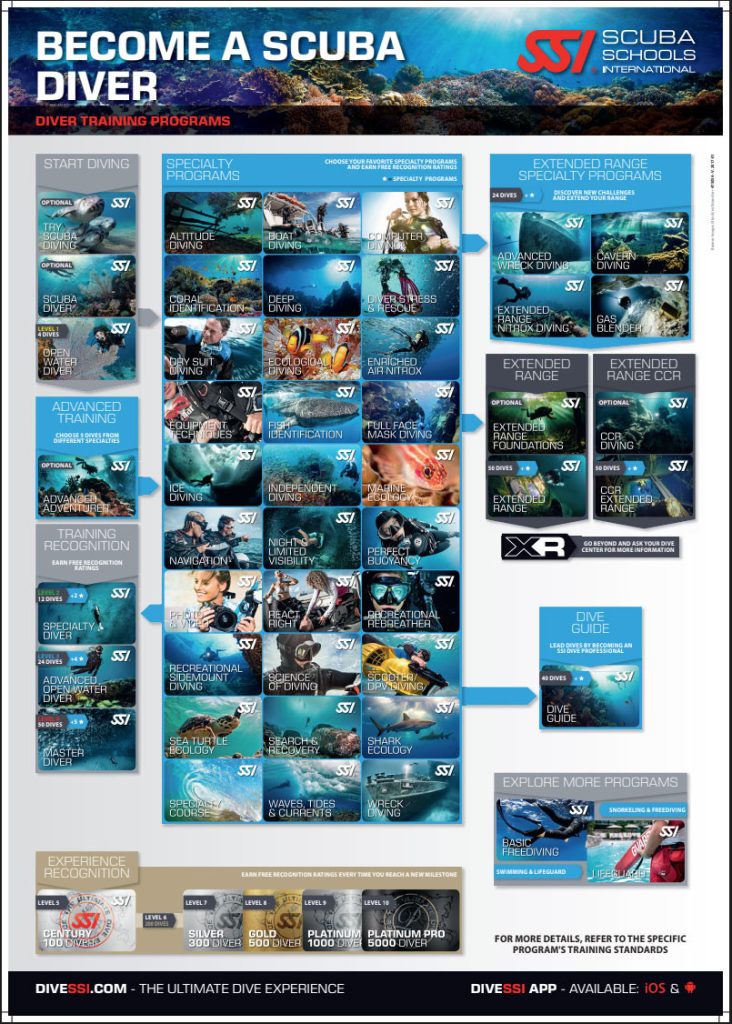
Why to choose SSI?
- Flexibility: The courses are organized according to the student’s performance.
- Price: Basic Theoretical courses are free and available online
- Certification recognition: Currently SSI is recognized throughout the world so you can dive without problem with its certifications.
4. BSAC (Best British Contingent)
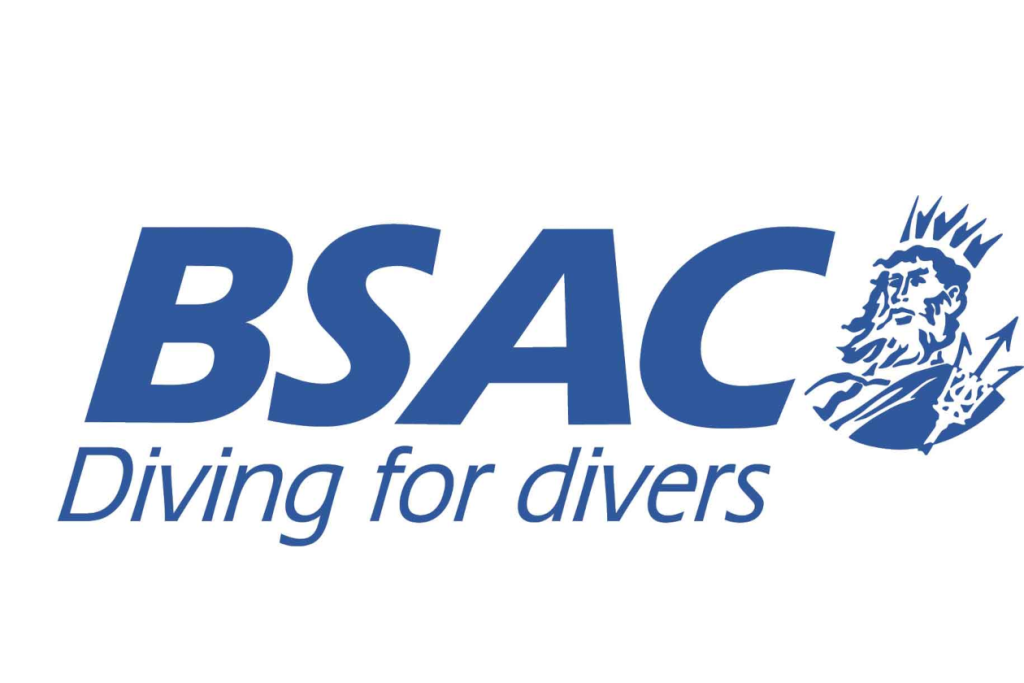
The BSAC has been active since 1953. However, it did not start as a training center. It was just a club for recreational diving. It was not until 1960 that it became an institution when it launched its first course to train instructors.
Nowadays, BSAC is the organization that regulates diving within the United Kingdom.
BSAC courses are viewed by many expert divers as an indisputable quality option. This is based on the harsh conditions of the waters where they are taught.
BSAC’s Teaching method
BSAC has its certification programs in basic and professional levels. The beginner course mixes several theory classes with a long training in a pool.
Later, when you have passed the pool courses, you will move on to open water training.
You must complete a minimum of four open water dives. After that, you can opt for any of the more technical courses.
Why choose BSAC for your certification?
If you live in the UK: Because BSAC is highly recognized in the United Kingdom, if you live in the area it is a good idea to choose this certification.
Quality: Their trainings are known for their high quality, although the organization is not as internationally known as is the case of PADI.
5. SDI (Scuba Diving International)
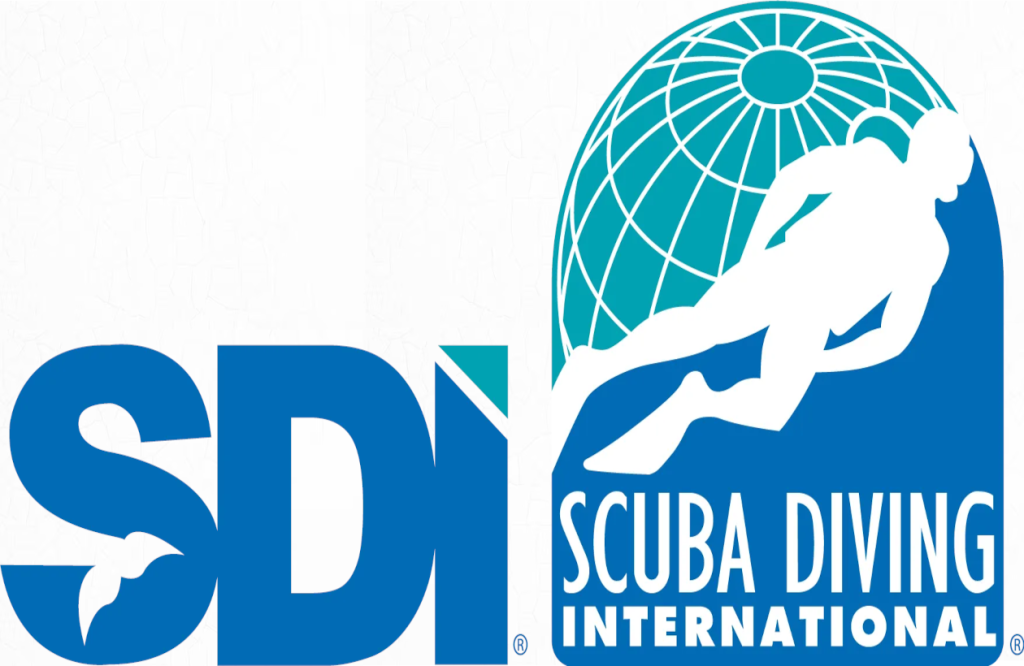
This diving organization is one of the newest. It was founded in 1998 and originally emerged as a sister institution of TDI (Technical Diving International), which specialized in technical diving.
The idea behind the creation of SDI was to offer a somewhat less technical alternative. The aim was to provide training in recreational diving, without discarding the professional knowledge of the trainers.
There are SDI training agencies in more than a hundred countries. And their certification programs are available for both adults and children. Many of the experts that teach in SDI also work at TDI, which ensures a wealth of experience.
SDI’s Teaching method
SDI’s method is based primarily on e-learning and multiple pool sessions. This is complemented with open water dives at the end of the course.
This diving organization has always been innovative. The agency has dive computers for you to learn. This alternative is easier than the typical dive tables.
SDI was the first dive training agency to offer a “Solo Diver” certification, which has cost it some criticism in the world of diving.
Why choose SDI?
- Innovation: SDI is usually an agency that incorporate new technologies quickly.
- Flexibility: Instructors have the flexibility to rearrange course content according to students.
- Technical Background: if your goal is to become a technical diver. The fact that SDI arises from TDI gives the instructors a very valuable technical background, useful in your learning process.
6. NAUI (The National Association of Underwater Instructors)
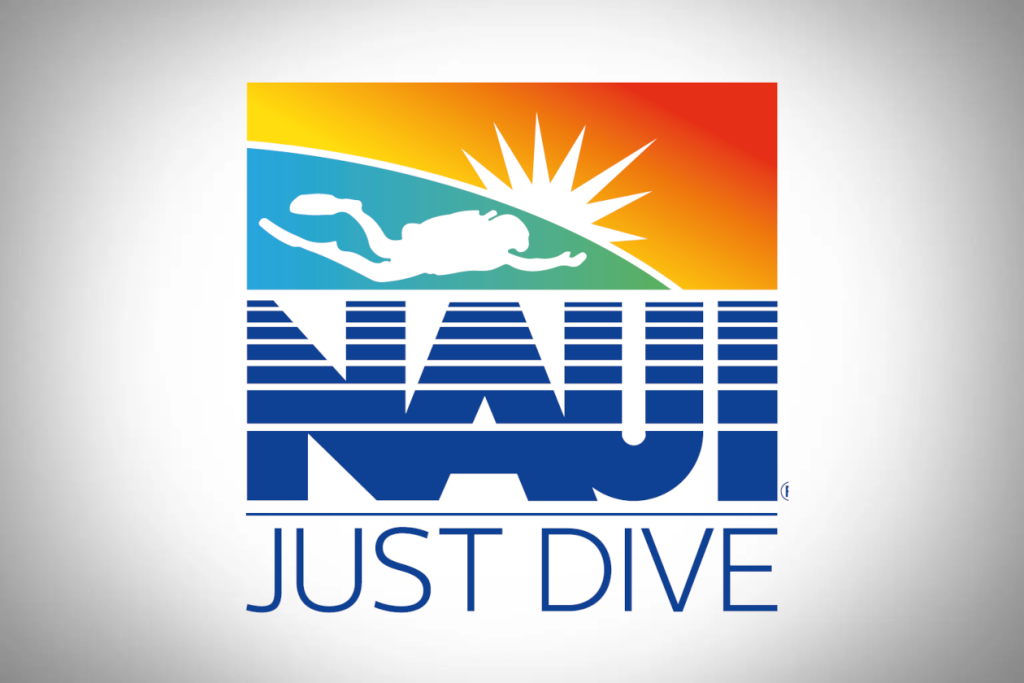
NAUI is an institution with quite a brilliant career and history. It is the oldest of all the ones you will see here. It’s founding dates back to 1959, and since then it has set the standard for certification programs.
Unlike other diving organizations, NAUI has not expanded as much. Its main headquarters are still in California, USA, although it has other centers throughout the country. However, it is not as present in the rest of the nations.
NAUI is a non-profit organization. In fact, in the official registry it appears as a non-profit educational association. At the same time, this agency has a very particular philosophy based on quality over quantity.
That is why it prefers to train a few divers, but who know well what they do. The idea of training many people, from their perspective, would reduce the attention that each one requires.
NAUI’s Teaching method
The NAUI method is very flexible, since the trainers are able to design the teaching process. For this reason each one will structure it as you learn or assimilate each lesson.
For example, if the instructor considers that you need more open water dives to practice, he can expand them. In other words, there is no obstacle to increasing the standard number of dives required in order to ensure proper student learning.
As soon as you finish the first course, you can go for other certification programs. NAUI has different levels of courses, from the most specialized to the recreational. And you could even become an official NAUI instructor, being able to teach independently.
NAUI Training process diagram
The NAUI training process incorporates the following courses:
- Skin Diver
- Open Water Scuba Diver
- Advanced Scuba Diver
- Specialty Courses
- Master Scuba Diver
- Technical Courses
- Leadership Courses (AI, DM, SDI)
- Instructor
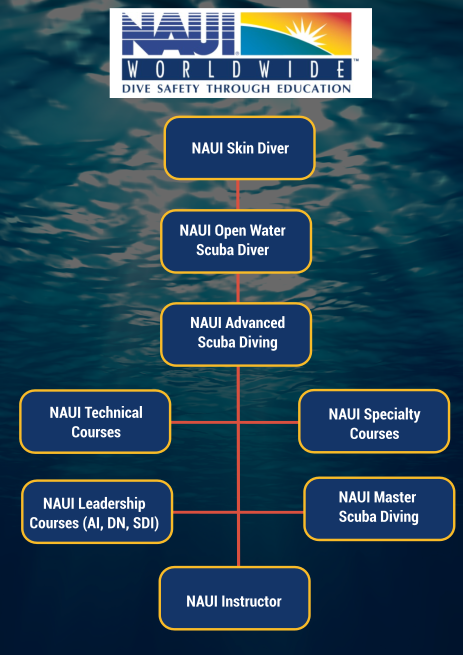
Why choose NAUI?
- If you live in the US: NAUI is international, but it is especially recognized in the United States. For this reason, If you live in this country it may be a good idea to train with NAUI
- Personalized courses: NAUI’s focus on quality over quantity makes its courses smaller and more personalized.
NAUI is internationally recognized. You will have no problems diving in other countries with this certification.
7. RAID (The Rebreather Association of International Divers)
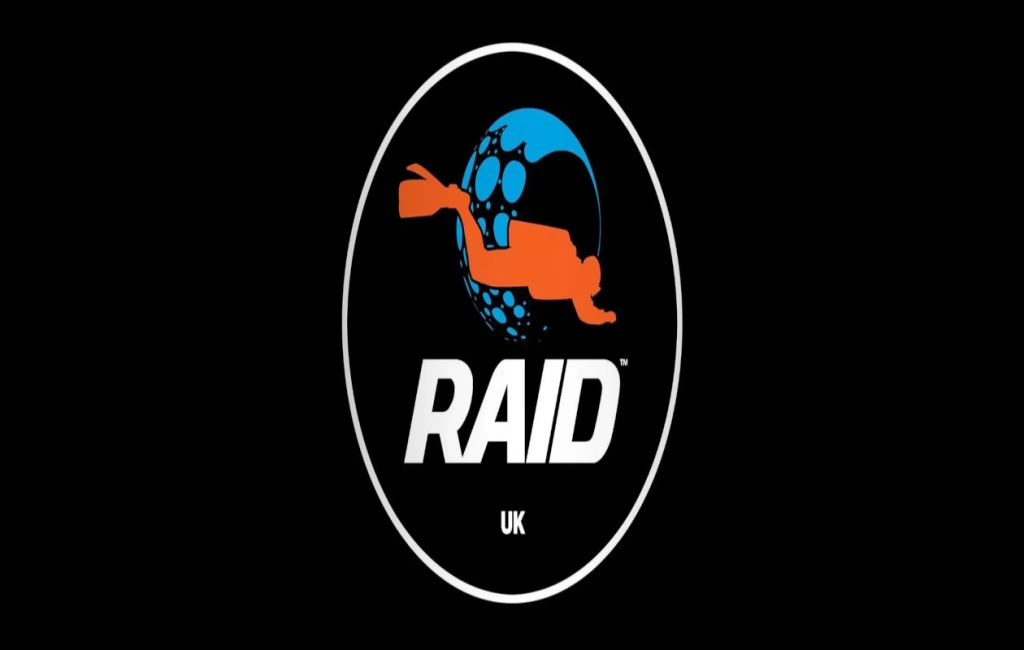
Last but not least, we have RAID, another young diving organization, officially founded in 2007, in Sweden. Behind its creation, there are several members who were in other agencies. Among them key figures from SSI and PADI.
RAID was born as an agency for everything related to SCUBA diving. However in 2014 its structure was expanded and many courses were added. From that moment on, RAID became an organization with an ecological philosophy.
RAID’s Teaching method
RAID’s training is completely online, as well as free of charge. This means all courses are held on the digital platform. There you will be able to communicate with your instructor.
Of course, there are more practical hours than theoretical ones. RAID is one of the organizations that requires more water hours in their certification programs. This way they guarantee a more vivid learning experience.
RAID training flowchart
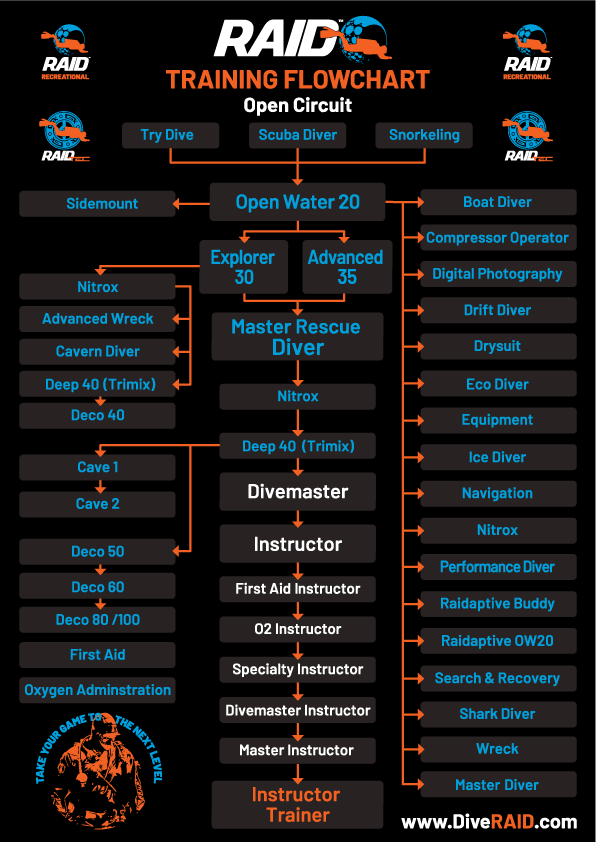
Why to choose RAID as diving organizartion?
- E-learning concept: RAID has a very complete online course structure.
- Price: Theoretical training is free.
Technical diving International (TDI)
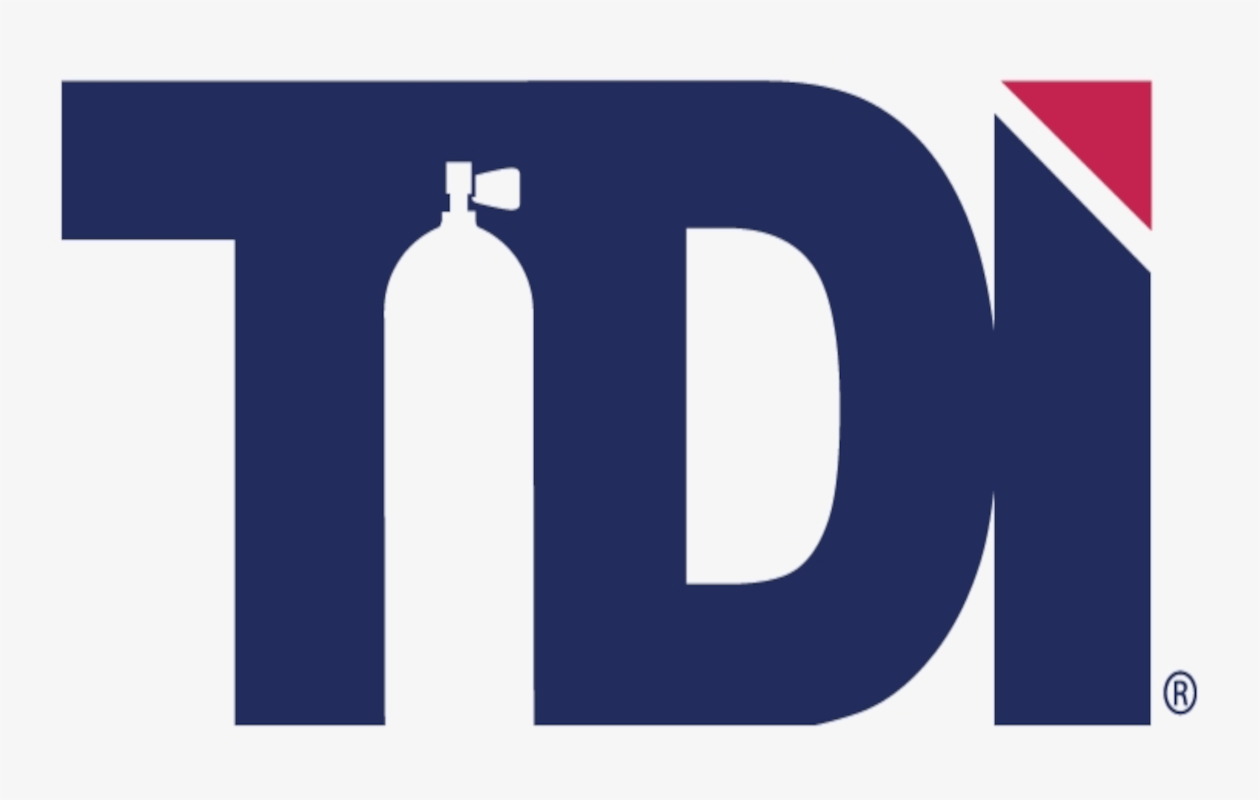
Technical Diving International (TDI) is probably the largest technical diving certification agency in the world.
TDI specializes in more advanced diving techniques and offers a wide variety of courses, including rebreather diving and the use of different breathable gas mixtures, such as Heliox and Trimix.
TDI was founded by Bret Gilliam, David Sipperly, and Mitch Skaggs in 1994, with the goal of providing training for emergency situations and a focus on specialized diving.
The Organization mainly focuses on three training areas:
Open Circuit Courses
In open circuit systems, air and gas mixture are used as the supply, however, air is the main gas supply. The diver breathes through a demand regulator connected to the compressed gas tank.
Re-breather courses
A system made up of a breathing circuit, a mouthpiece, a CO2 absorbent container and a counterlung. Rebreathers allow for higher gas efficiency, optimized decompression characteristics, and quieter operation, but require training to use.
Overhead Environment Courses
Consider diving situations in which there is no open water above the diver and a direct ascent is not possible. This training considers diving in caves and closed spaces.
The organization also offers other courses such as Technical Diving Instructor and Technical Divemaster.
Many diving organizations. How to choose one ?
As you have seen, there are many diving organizations. To choose in which of them you will carry out your training it is important to consider three aspects:
- What is your goal: If you only want to dedicate yourself to recreational diving, possibly any of the mentioned organizations will work for you. But if you want to venture into more advanced courses, you must evaluate the training structure. Knowing where you want to go is important.
- Where do you want to dive: If your goal is to travel and have different diving experiences in different places, it is very positive that you have valid and internationally recognized certifications. If you are diving on your vacation and the dive guide must search the internet for your certification, it could be that it is not well known.
- The community: While this is not synonymous with quality, it is always good to be part of a recognized community. Learning does not only occur in the classroom. It occurs in interaction with other divers who belong to the same organization and who use the same language and standards.
| Organization | Year Founded | Global Reach | Entry-Level Certification | Advanced Certification | Professional Certification |
| PADI (Professional Association of Diving Instructors) | 1966 | Over 180 countries | Open Water Diver | Advanced Open Water Diver | Divemaster |
| CMAS (World Confederation of Underwater Activities) | 1959 | International presence | One Star Diver | Two Star Diver | Two Star Diver |
| SSI (Scuba Schools International) | 1970 | Over 110 countries | Open Water Diver | Advanced Open Water Diver | Dive Control Specialist |
| NAUI (National Association of Underwater Instructors) | 1959 | International presence | Scuba Diver | Advanced Scuba Diver | Divemaster |
| SDI (Scuba Diving International) | 1998 | International presence | Open Water Scuba Diver | Advanced Adventure Diver | Divemaster |
| BSAC (British Sub-Aqua Club) | 1953 | Mainly in the United Kingdom | Ocean Diver | Sports Diver | Dive Leader |
| RAID (Rebreather Association of International Divers) | 2007 | International presence | International presence | Advanced 35 | Divemaster |
So, now that you know the main diving organizations you may be interested in knowing What is the best scuba diving certification.
Which organization do we belong to?
Costa Rica Dive and Surf is part of the PADI family. We are a certified dive center through which you can obtain almost all PADI certifications.
We have all the necessary equipment, boats, location devices and a trained staff so that you can enjoy diving with peace of mind.
Scuba diving organizations – Summary
There are hundreds of dive organizations, of varying sizes and experience. Some are newer than others or have different approaches.
While there is no better one, there are some that are globally recognized and have many members and experience.
Choosing a good organization is important. Especially if you plan to travel and dive in other parts of the world.
If you have questions or are interested in obtaining a certification in Costa Rica, we are waiting for you! Send us a message or give us a call! We will be happy to chat with you.
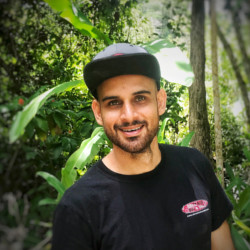
Master Scuba Diver Trainer with thousands of dives in Caño Island.
Guide certified by the Costa Rican Tourism Institute with more than 15 years of experience showing the best of Costa Rica to its visitors.
Sailor with a passion for sailing boats, exploring new dive sites, and marine conservation projects.
Owner and team leader in Costa Rica Dive and Surf.
